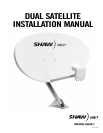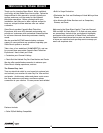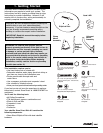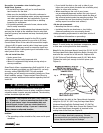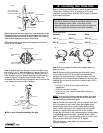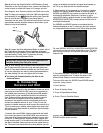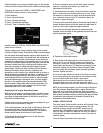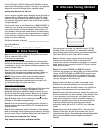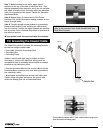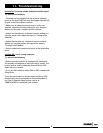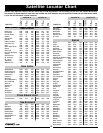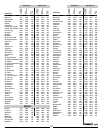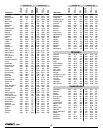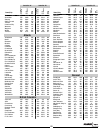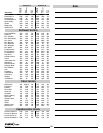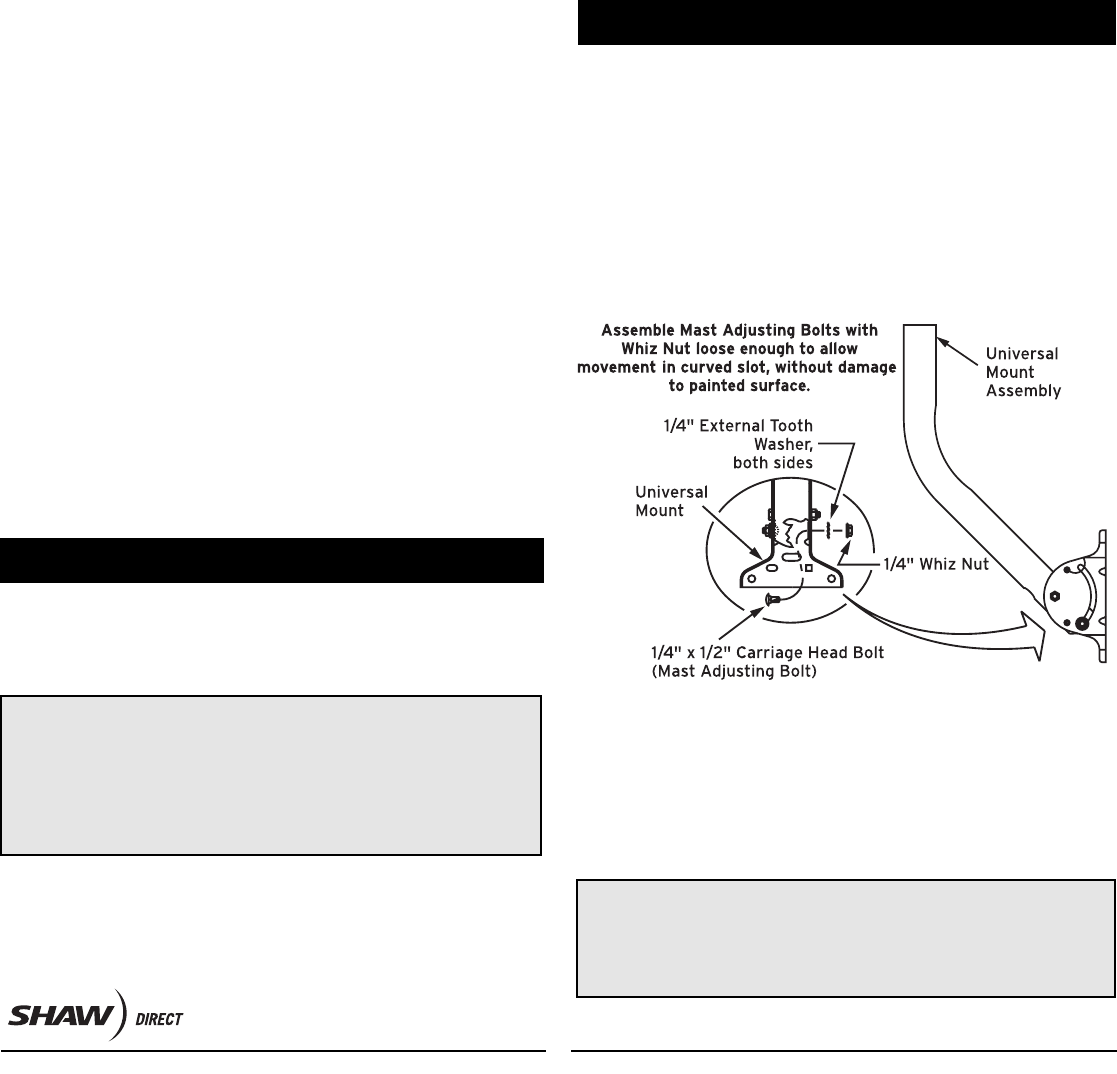
SAC-00-094
Key points to remember when installing your
Shaw Direct System:
• Do not drill any holes until you’ve confirmed the
best location for the dish.
• Make sure the installation of the dish conforms to
local electrical and building codes, zoning requirements
and other applicable laws and regulations. If you are
unsure, contact your local electrician or building
inspector for assistance.
• For possible periodic removal of snow, choose a site
that is easily accessible.
• Ensure there are no visible obstructions between the dish
and your line of sight to the satellites. Keep in mind that
trees will grow up and outward and may eventually block
the signal.
• The maximum allowable length for the RG-6 coaxial
cable connecting the receiver to your dish is 125 feet.
Consult Shaw Direct if the cable will exceed this length.
• Use only RG-6 grade coaxial cable. Using lower grade
RG-59 coaxial cable may result in excessive signal loss
and poor reception. Cable grade type is indicated on the
outer jacket of the cable.
• Do not install the dish:
• Under power lines
• Where it may be easily tampered with
• Where it is exposed to high winds, during windy or
stormy conditions
Shaw Direct offers a supplementary Self Install Kit, If you
have not already purchased our Self Install Kit, you may
do so by calling 1.888.554.7827. This kit contains
everything you will need to successfully install your Shaw
Direct satellite system. Please contact Shaw Direct to
order or receive additional information regarding the Self
Install Kit.
2. Mounting Locations
Your dish will typically be mounted on a solid base. To
ensure your dish doesn’t move in windy conditions, choose
a location where it can be securely fastened. The mounting
surface should be rigid and solid.
IMPORTANT: The Elliptical Dish has a turn radius of
+/
_
35 degrees. If you are mounting the dish on the
side of your house, check the assembled dish and
mounting pole to see if you can rotate the dish in
the desired azimuth setting. If you can’t rotate the
dish, choose an alternate location.
Key things to remember when choosing a mounting
location:
• The mounting surface should be flat, even and in good
condition.
• If you install the dish on the roof or side of your
house, be sure to attach the bolts into a building stud,
rafter or other solid surface.
• When mounting on the roof of your house,
use an adequate/approved sealant (for your type of
roofing material) around the holes where the base of
the universal mount meets the mounting surface. This
will prevent the roof from leaking. (Consult with a
roofing expert to confirm best sealant.)
• We do not recommend:
• Mounting the dish on a railing
• Installing the dish on aluminum or vinyl siding
(these are unlikely to be structurally sound)
• Keep grounding requirements in mind (see section 11
for additional information on grounding).
3. Dish Assembly
Step 1: To avoid losing any hardware components, select
a clear area on the ground for dish assembly.
Step 2: On the Universal Mount, insert the (2) 1/4" X 1/2"
Carriage Head Bolts (Mast Adjusting Bolts), through the
mast and the curved slot of the mount. Capture with
(2) 1/4" External Tooth Washers and (2) 1/4" Whiz Nuts.
Tighten the bolts just enough to hold in place (see
Figure A).
Step 3: Attach the dish to the Clamp Mount Assembly
using the (2) 1/4" X 1-3/4" Long Carriage Head Bolts
(Antenna Mounting Bolts-Painted Head), (2) 1/4 Flat
Washers and (2) 1/4" Whiz Nuts. Ensure the Center Pivot
Pin on the Clamp Mount Assembly is inserted in the
mating hole of the Dish (see Figure B).
Note: We do not recommend mounting the dish on
the roof unless absolutely necessary. We also
recommend that you consult a building expert for
future tips on preventing roof leakage.
4
Fig. A



